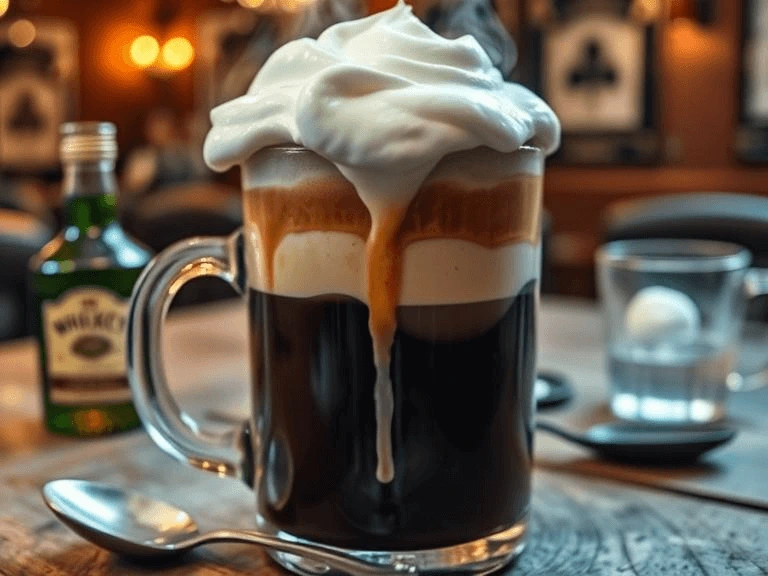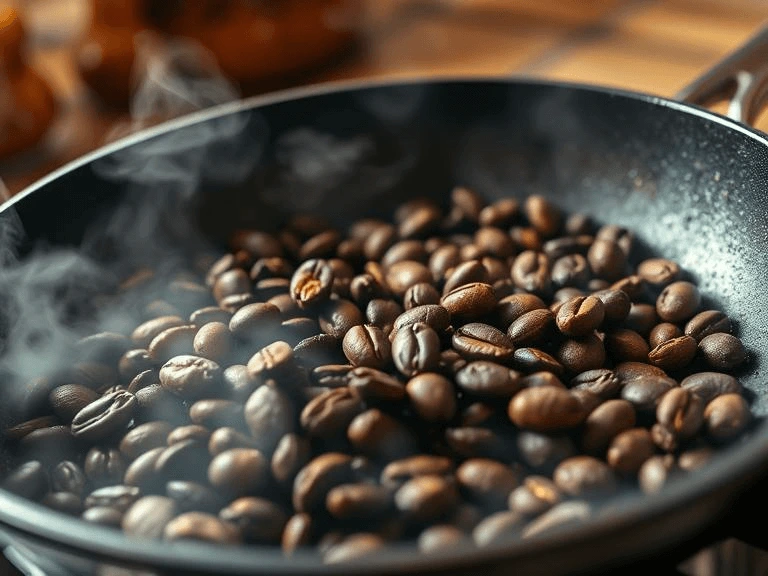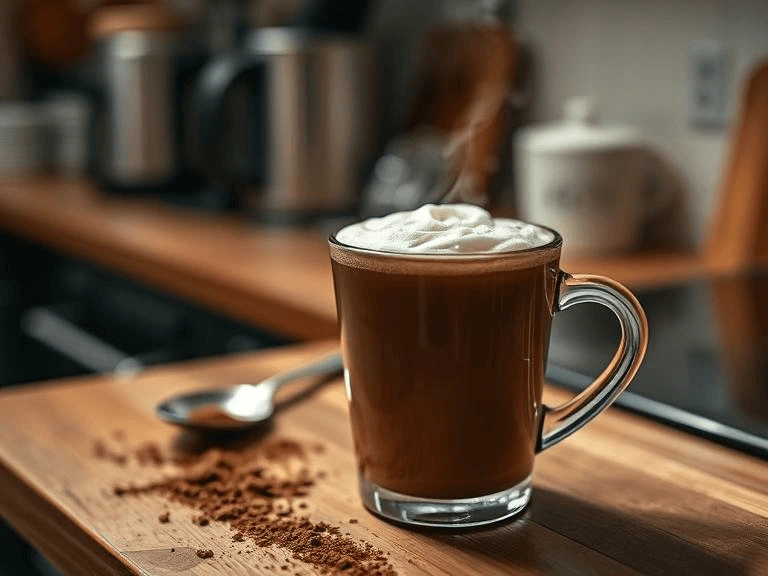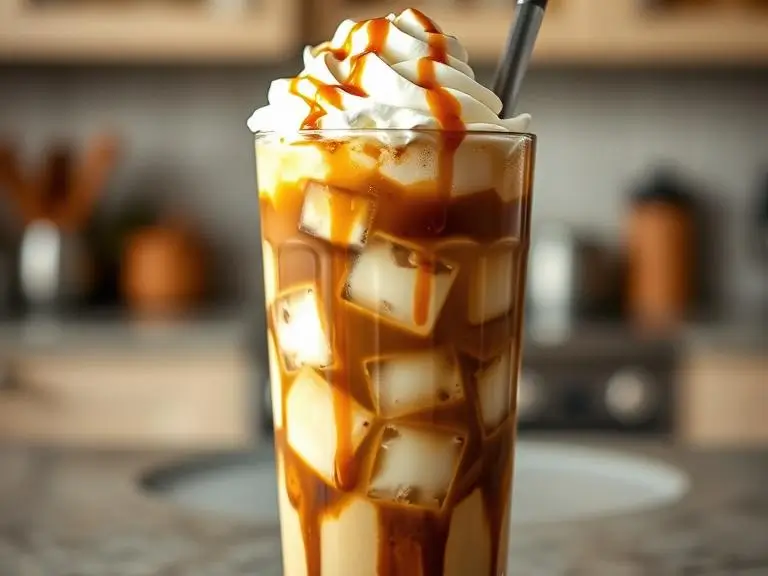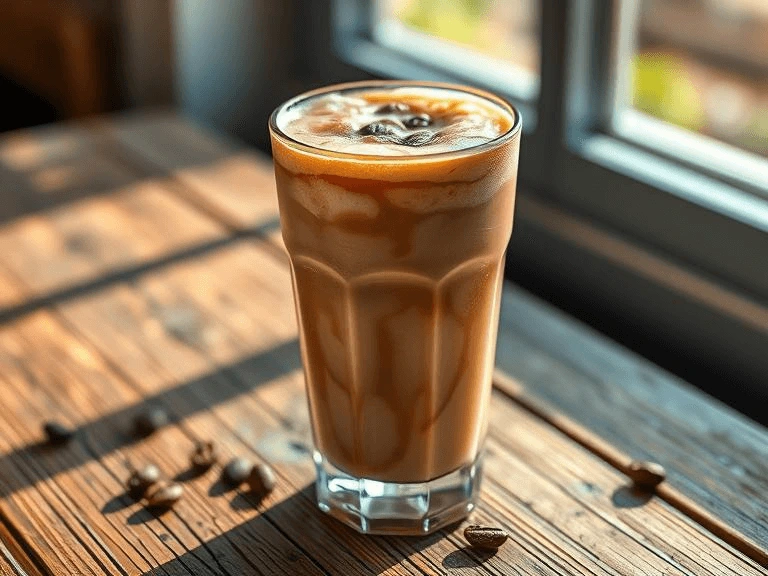irish coffee: How 2 Quick Tricks Elevate Your Brew
Table of Contents
Have you ever sipped a perfectly made Irish coffee at your favorite pub and wondered why your homemade version never quite measures up?
This classic cocktail—a warming blend of hot coffee, Irish whiskey, sugar, and cream—seems deceptively simple, yet achieving that perfect balance of flavors at home often feels like chasing leprechaun gold.
The good news? Creating authentic, pub-quality Irish coffee in your own kitchen isn’t just possible—it’s surprisingly easy once you know the secrets. Whether you’re looking to impress guests at your next dinner party or simply want to treat yourself to a luxurious weekend indulgence, mastering this iconic drink will elevate your home bartending skills to new heights.
In this comprehensive guide, we’ll unlock everything you need to know about crafting the perfect Irish coffee—from selecting the right whiskey and coffee beans to achieving that picture-perfect cream float that makes this drink so distinctive. We’ll break down common mistakes, share expert tips, and provide step-by-step instructions that anyone can follow, regardless of your previous experience with coffee cocktails.
So grab your favorite mug, warm up your coffee maker, and prepare to discover how a few simple techniques can transform your homemade Irish coffee from disappointing to extraordinary.
The Rich History of Irish Coffee
Before diving into how to make this delightful drink, let’s take a moment to appreciate its origins. Irish coffee wasn’t created in some ancient pub centuries ago—it has a surprisingly recent and well-documented history.
The original Irish coffee was invented in 1943 by Joe Sheridan, a chef at Foynes Port near Limerick, Ireland. When a group of American passengers arrived after a long, cold transatlantic flight, Sheridan added whiskey to their coffee to warm them up. When asked if they were drinking Brazilian coffee, Sheridan replied, “No, it’s Irish coffee.”
The drink was later popularized in the United States by travel writer Stanton Delaplane, who brought it to the Buena Vista Café in San Francisco in 1952. Today, this café still serves over 2,000 Irish coffees daily!
“To experience a taste of Irish history in a glass is something special. The Irish coffee isn’t just a drink—it’s a tradition that brings warmth to both body and spirit.” — Liam O’Brien, Master Bartender at Dublin’s Whiskey Museum
The Four Essential Components of Irish Coffee
The beauty of Irish coffee lies in its simplicity. You need just four main ingredients, but the quality and proportion of each makes all the difference:
- Coffee: The foundation of your drink
- Irish whiskey: The spirit that gives it character
- Sugar: The sweetener that balances the flavors
- Cream: The crowning glory that floats on top
Let’s explore each component in detail.
Selecting the Perfect Ingredients for Irish Coffee
Choosing the Right Coffee
Your Irish coffee experience begins with selecting the right coffee beans. Unlike other coffee cocktails that might mask subpar coffee with stronger flavors, the coffee in an Irish coffee needs to stand up to the whiskey while maintaining its own character.
Best coffee types for Irish coffee:
- Medium to dark roast: These provide the robust flavor needed to balance the whiskey
- Low acidity: Helps prevent curdling the cream
- Fresh ground: For optimal flavor extraction
Coffee brewing methods ranked for Irish coffee:
| Brewing Method | Suitability | Why It Works |
|---|---|---|
| French Press | Excellent | Rich body, full flavor, no paper filter to remove oils |
| Pour-over | Very Good | Clean flavor, consistent strength |
| Espresso (diluted) | Good | Concentrated flavor, needs dilution |
| Drip Coffee | Acceptable | Convenient, but sometimes lacks body |
| Instant Coffee | Last Resort | Lacks complexity, but works in a pinch |
Pro tip: Brew your coffee slightly stronger than you would normally drink it, as the whiskey and cream will dilute the flavor.
Selecting the Right Irish Whiskey
Not all Irish whiskeys are created equal when it comes to making Irish coffee. The whiskey you choose significantly impacts the final taste profile.
Best Irish whiskeys for Irish coffee:
- Jameson: Smooth and versatile, this is often considered the standard
- Tullamore D.E.W.: Slightly spicier with honey notes
- Bushmills Original: Lighter with a subtle sweetness
- Powers Gold Label: Bold and spicy, for a more pronounced whiskey flavor
- Paddy: Exceptionally smooth with a light body
For those new to Irish coffee, Jameson provides a reliable baseline experience. As you become more experienced, experimenting with different whiskeys allows you to customize your drink to your taste preferences.
According to research from the Irish Whiskey Association, the popularity of Irish coffee has contributed significantly to the global resurgence of Irish whiskey, with sales increasing by over 300% in the past decade.
The Sweet Element: Sugar Options
Traditional Irish coffee recipes call for brown sugar, which adds a molasses-like depth to complement the whiskey. However, several sweetener options can work:
Sweetener options for Irish coffee:
- Brown sugar: Traditional choice, adds caramel notes
- Demerara sugar: Less processed with a richer flavor
- Simple syrup: Dissolves instantly, good for cold versions
- Maple syrup: Adds distinctive flavor (non-traditional but delicious)
- Sugar cubes: Dissolve slowly but add a touch of elegance
Avoid using:
- Artificial sweeteners (they can leave an aftertaste)
- White granulated sugar (lacks depth of flavor)
The Perfect Cream Float
The defining visual characteristic of a proper Irish coffee is the beautiful layer of cream floating on top. Achieving this requires understanding a few key principles:
Tips for the perfect cream float:
- Use heavy cream: 36% fat content or higher works best
- Slightly whipped: Thickened but still pourable
- Properly chilled: Cold cream floats better
- Pour technique: Use the back of a warm spoon to layer gently
Step-by-Step Guide to Making Irish Coffee at Home
Now that we understand the components, let’s put everything together to create the perfect Irish coffee at home.
Essential Equipment
Before starting, gather these tools:
- Heat-resistant glass: Traditional Irish coffee glass or mug
- Whisk or hand frother: For whipping cream
- Measuring tools: Jigger or measuring spoons
- Spoon: For layering cream
- Kettle: For heating water if using pour-over method
Preparation Steps
- Pre-heat your glass: Fill with hot water and let sit while brewing coffee
- Brew your coffee: Prepare 6 oz of strong, hot coffee
- Whip your cream: Whisk until slightly thickened but still pourable
- Empty the pre-heated glass: Discard the hot water
The Assembly Process
Follow these steps precisely for the best results:
- Add sugar to the warm glass: 2 teaspoons of brown sugar
- Pour in hot coffee: Fill about 3/4 of the glass
- Stir until sugar dissolves completely: This is crucial for flavor distribution
- Add Irish whiskey: 1.5 oz (a standard shot)
- Stir gently to incorporate: Just a few turns
- Create the cream float: Hold a warm spoon (back side up) over the coffee surface and slowly pour cream over the back of the spoon
- Do not stir after adding cream: The drink should be consumed through the cream
Proper Irish Coffee Measurements
For a standard 8 oz Irish coffee glass:
| Ingredient | Amount | Notes |
|---|---|---|
| Coffee | 6 oz (180 ml) | Hot and freshly brewed |
| Irish Whiskey | 1.5 oz (45 ml) | Room temperature |
| Brown Sugar | 2 teaspoons (8g) | Adjust to taste |
| Heavy Cream | 2 oz (60 ml) | Slightly whipped |
Common Mistakes to Avoid When Making Irish Coffee
Even with simple ingredients, there are several pitfalls that can ruin your Irish coffee experience:
Temperature Management Errors
Problem: Using coffee that’s not hot enough Result: The drink gets cold too quickly and the flavors don’t meld properly Solution: Brew coffee fresh and pre-heat your glass
Problem: Adding cold whiskey directly to hot coffee Result: Lowers the overall temperature too much
Solution: Allow whiskey to reach room temperature before adding
Cream Catastrophes
Problem: Over-whipping the cream
- Result: Cream too thick to pour and doesn’t integrate properly when drinking
- Solution: Stop whipping when cream just begins to thicken but still moves when tilted
Problem: Under-whipping the cream
- Result: Cream sinks instead of floating
- Solution: Whip until it reaches “ribbon stage” where it falls in ribbons from the whisk
Problem: Pouring cream directly onto coffee surface
- Result: Cream breaks through and mixes with coffee
- Solution: Use the back-of-spoon technique for gentle layering
Flavor Balance Issues
Problem: Too much whiskey Result: Overpowers coffee flavor and may be too alcoholic Solution: Stick to measurements and adjust gradually in future attempts
Problem: Using low-quality ingredients Result: Subpar flavor profile overall Solution: Invest in good coffee and decent Irish whiskey, even if budget-friendly options
Creative Variations on the Classic Irish Coffee
While the traditional Irish coffee recipe is a masterpiece on its own, there are several exciting variations worth exploring:
Seasonal Irish Coffee Ideas
Autumn Spice Irish Coffee:
- Add a pinch of pumpkin spice to the coffee
- Use maple syrup instead of brown sugar
- Garnish with grated nutmeg
Winter Holiday Irish Coffee:
- Add a small dash of vanilla extract
- Use a cinnamon stick as a stirrer
- Garnish with grated chocolate
Spring Refresh Irish Coffee:
- Add a drop of orange bitters
- Use honey instead of brown sugar
- Garnish with orange zest
Regional Irish Coffee Variations
Belfast-Style:
- Uses a blend of Irish whiskey and Irish Cream liqueur
- Topped with whipped cream and chocolate shavings
Galway-Style:
- Incorporates a touch of local honey
- Uses lighter roast coffee for a different flavor profile
American Adaptation:
- Often sweetened with simple syrup
- Sometimes served with a cinnamon stick
Expert Tips for Irish Coffee Mastery
Take your Irish coffee to the next level with these professional insights:
The Perfect Drinking Experience
For the full Irish coffee experience, consider:
- Don’t stir after adding cream: Sip the coffee through the cream layer
- Serve immediately: The temperature contrast is part of the experience
- Pair with a small biscuit: Traditional in many Irish pubs
- Hold by the handle: The glass will be hot!
Make-Ahead Options for Entertaining
When serving Irish coffee at parties:
- Pre-measure whiskey: Have individual portions ready
- Pre-heat glasses: Keep filled with hot water until ready to use
- Whip cream in advance: Keep refrigerated until needed
- Create a DIY station: Allow guests to customize sugar amount
According to research from Food & Wine Magazine, Irish coffee ranks among the top five most-ordered hot cocktails in American bars during winter months, showing its enduring popularity despite centuries of cocktail innovation.
Key Takeaways: Mastering Irish Coffee at Home
Throughout this guide, we’ve explored how to craft the perfect Irish coffee in your own kitchen. Remember these essential points:
- Use quality ingredients—especially freshly brewed coffee and proper Irish whiskey
- Pay attention to temperatures—pre-heat your glass and use hot coffee
- Master the cream float technique—it’s what makes an Irish coffee special
- Balance the flavors—the right proportions create harmony between coffee, whiskey, sugar, and cream
Conclusion: Your Journey to Irish Coffee Excellence
The perfect Irish coffee is more than just a drink—it’s an experience that connects you to a rich tradition dating back to 1943. With the techniques and tips shared in this guide, you now have everything you need to create this classic beverage at home with confidence and style.
Remember that mastering Irish coffee is like any other culinary skill—it improves with practice. Don’t be discouraged if your first attempt isn’t perfect. Each time you make it, you’ll develop a better feel for the proper balance of ingredients and refine your cream-floating technique.
Whether you’re serving Irish coffee as a warming winter treat, an impressive finale to a dinner party, or simply enjoying a moment of indulgence on a quiet evening, this versatile drink deserves a place in your home beverage repertoire.
So gather your ingredients, pre-heat that glass, and begin your Irish coffee journey. With a little attention to detail and the knowledge you’ve gained, you’re well on your way to creating a drink that would make Joe Sheridan himself proud.
Ready to share your creation? Take a photo of your homemade Irish coffee and tag us on social media with #PerfectIrishCoffee—we’d love to see your results!
Also Read:
Frequently Asked Questions About Irish Coffee
Can I make Irish coffee without alcohol?
Yes, you can make a non-alcoholic version of Irish coffee by substituting the whiskey with whiskey extract (which contains negligible alcohol) or a teaspoon of vanilla extract mixed with a dash of almond extract. This gives you a similar flavor profile without the alcohol content. It won’t be authentic Irish coffee, but it will provide a similar experience.
How do I fix it if my cream sinks instead of floating?
If your cream is sinking into your Irish coffee instead of floating, there are three likely causes:
- The cream isn’t whipped enough—it should be thickened but still pourable
- You’re pouring too forcefully—use the back of a spoon and pour very gently
- The coffee might be too hot—allow it to cool for 30 seconds before attempting to float the cream
Can Irish coffee be made in advance?
While the components can be prepared ahead of time, a true Irish coffee should be assembled just before serving. You can pre-measure your whiskey, pre-whip your cream (though not too far in advance), and have your sugar ready, but the coffee should be freshly brewed and the drink assembled when you’re ready to serve for the best temperature contrast and flavor.
Why is my Irish coffee too bitter?
If your Irish coffee tastes too bitter, consider these adjustments:
- Use a medium roast coffee instead of a dark roast
- Increase the amount of brown sugar slightly (try an additional teaspoon)
- Make sure you’re not using too much whiskey, which can enhance perceived bitterness
- Check that your coffee isn’t over-extracted during brewing
What’s the best glass for serving Irish coffee?
The traditional vessel for Irish coffee is a clear, heat-resistant glass with a handle, typically holding 6-8 ounces. While special Irish coffee glasses are available, any heat-resistant glass mug will work. The clear glass is important so you can appreciate the distinct layers of the drink, especially the cream floating on top. Avoid using ceramic mugs if possible, as they hide the beautiful presentation that makes Irish coffee so distinctive.
Did this method work for you? Tell us your results!?
There are no reviews yet. Be the first one to write one.

